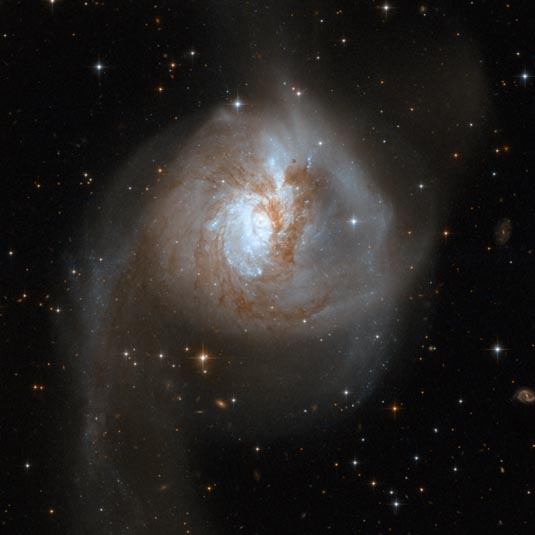
Interacting Galaxies
RA 10hr 27m 51.57s Dec -43° 54' 13.4"
Vela
11.3
6.76 'x 2.69'
100 million light-years (50 million parsecs)
ACS/WFC
November 5, 2001
35 minutes
NASA, ESA, the Hubble Heritage (STScI/AURA)-ESA/Hubble Collaboration, and A. Evans (U of Virginia, Charlottesville/NRAO/Stony Brook Univ)
April 24, 2008
2018 Image: G1811
ABOUT THIS IMAGE:
NGC 3256 is an impressive example of a peculiar galaxy that is actually the relict of a collision of two separate galaxies that took place in a distant past. The telltale signs of the collision are two extended luminous tails swirling out from the galaxy. NGC 3256 belongs to the Hydra-Centaurus supercluster complex and provides a nearby template for studying the properties of young star clusters in tidal tails. The system hides a double nucleus and a tangle of dust lanes in the central region. The tails are studded with a particularly high density of star clusters. The galaxy was discovered on March 15, 1836 by John Herschel.
This
image is part of a large collection of 59 images of merging galaxies taken
by the Hubble Space Telescope and released on the occasion of its 18th
anniversary on 24th April 2008.